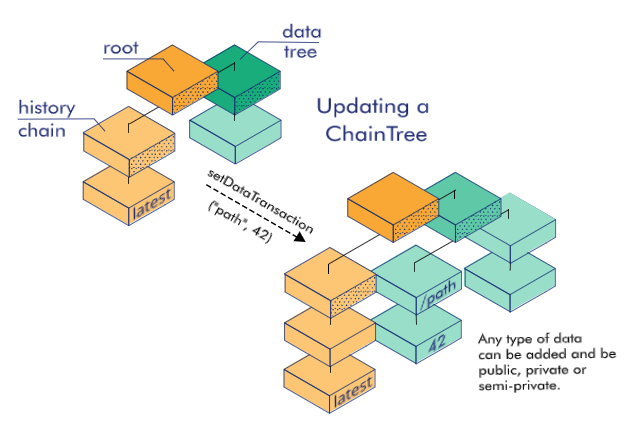Hello Decentralized World

Tupelo is easy.
The straightforward API and growing list of familiar language libraries make integrating the power of a distributed ledger into your application fast and simple.
Please take a minute and try our “Hello World” tutorial in Node. You will have your first transaction signed in no time.
You can read all about Tupelo below, or if you prefer to learn by doing, jump in and build a small app for recording immutable notes on the Tupelo DLT.
Looking for samples to build off for your own work? Check out examples leveraging the WASM SDK to do ownership transfer, setting and getting data or issuing and transferring tokens.
Tupelo Is Distributed Ledger Done Differently

Tupelo is purpose-built for the things you’re building. ChainTrees, our completely unique data structure, open the door for practical, real-world application development.
With ChainTrees, each object or actor is modeled independently allowing for infinite sharding. This makes the underlying system much more efficient, flexible, and transferrable than existing cumbersome, single chain systems.
A ChainTree is made up of a ‘chain’ for the history of the object and a ‘tree’ to flexibly store relevant data. The data can be of any type and be made public, private or semi-private depending on your applications needs.
Read on to learn how this unique datastructure enables a much faster and more efficient signing network while maintaining the integrity of the underlying data.
